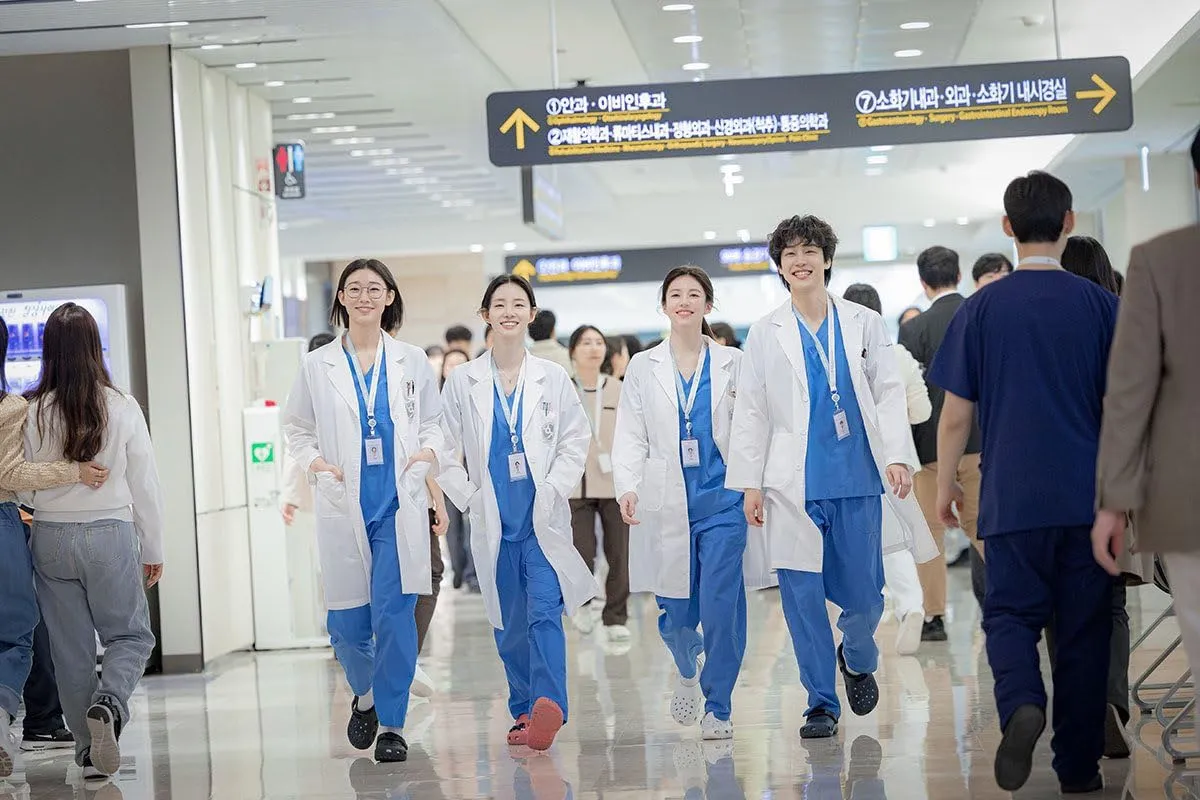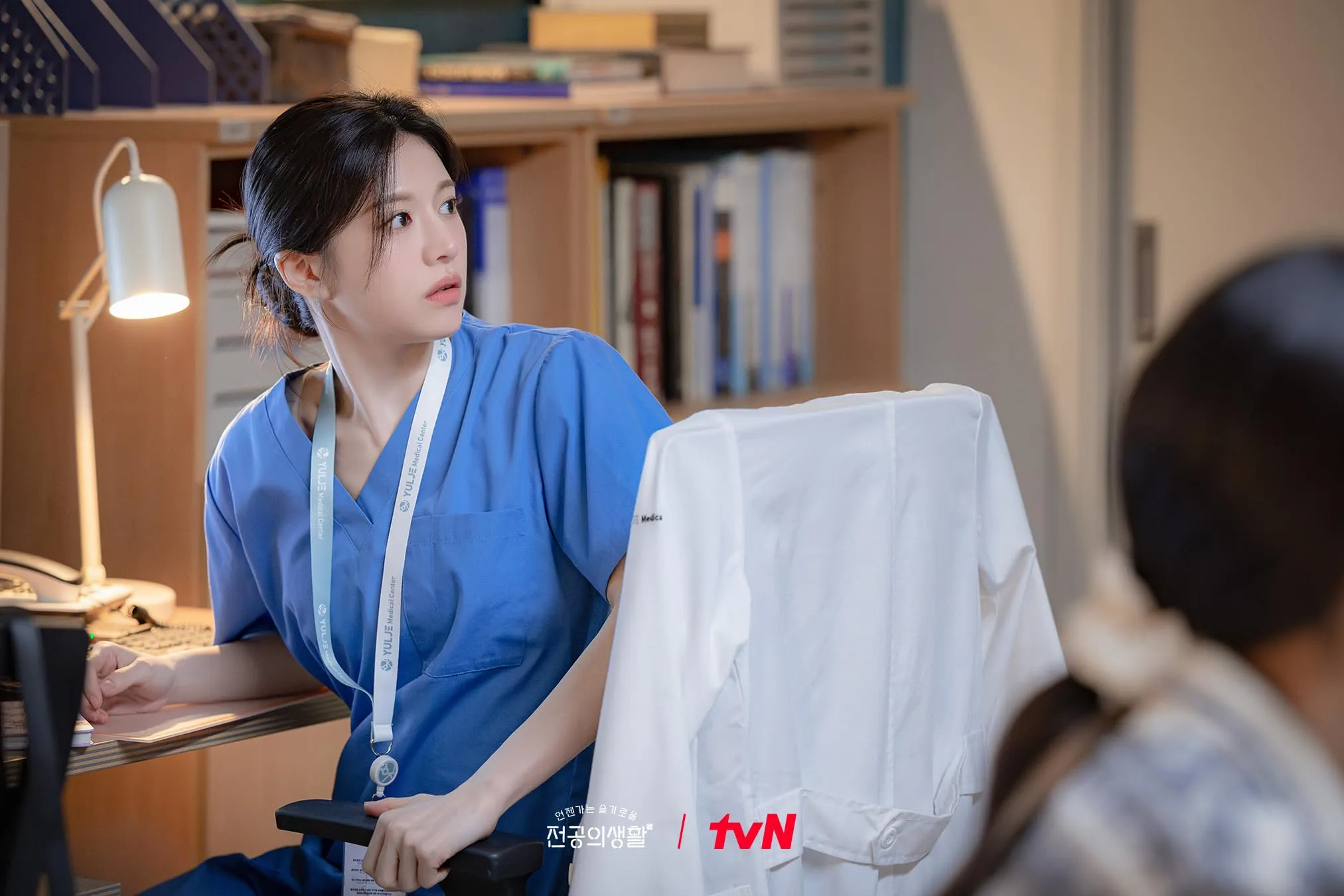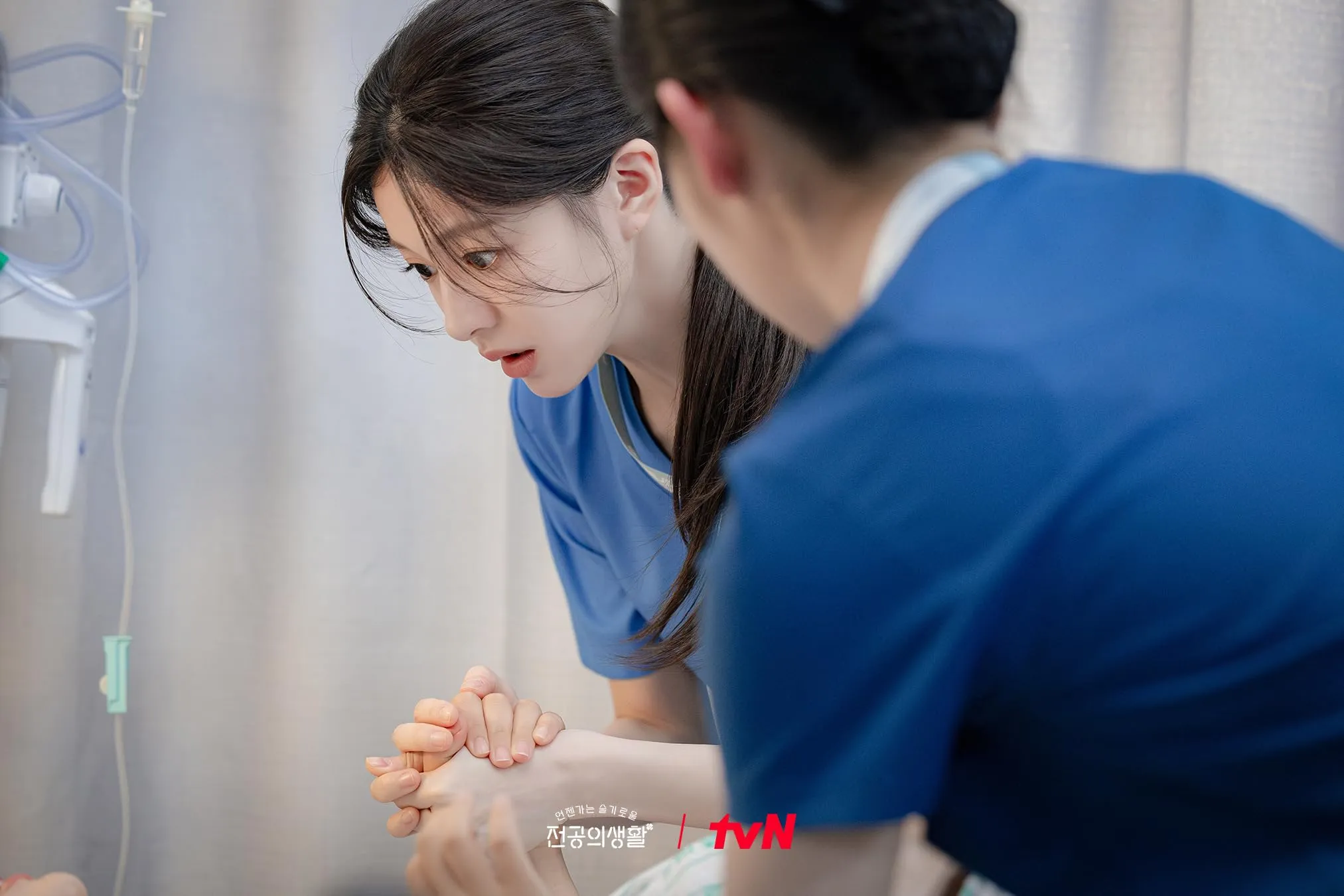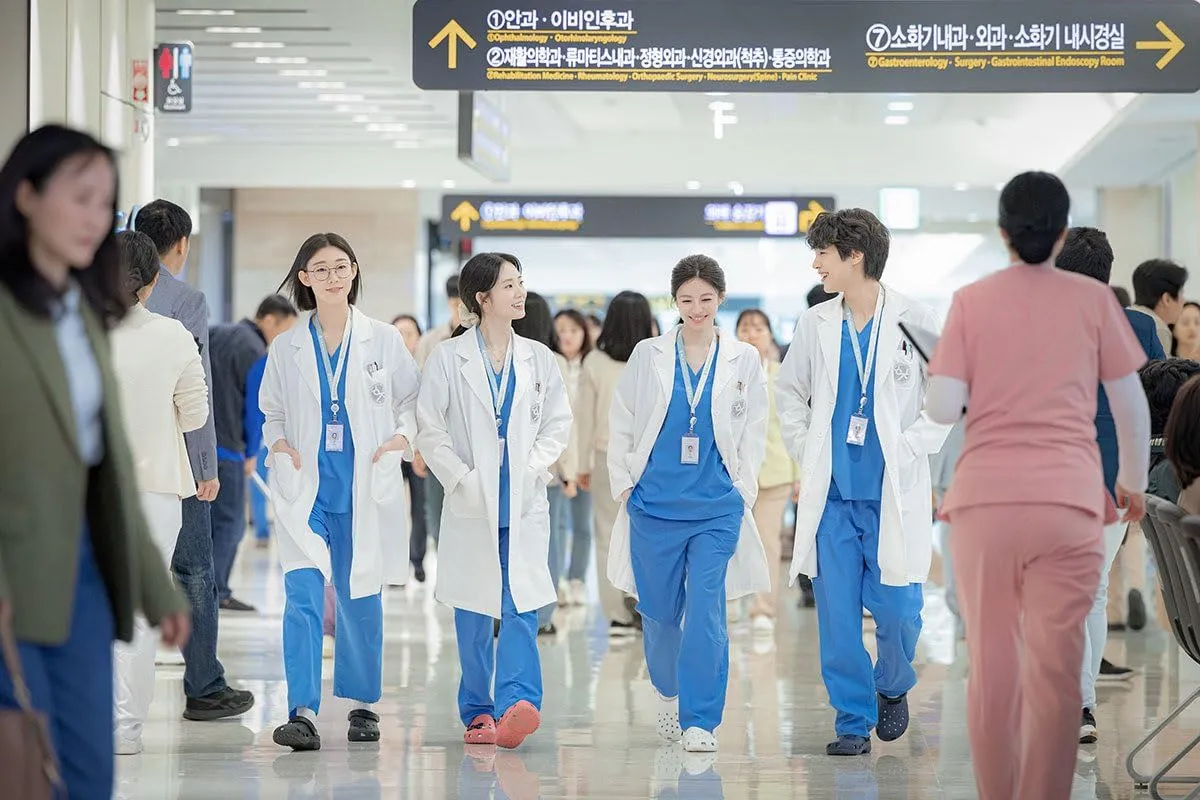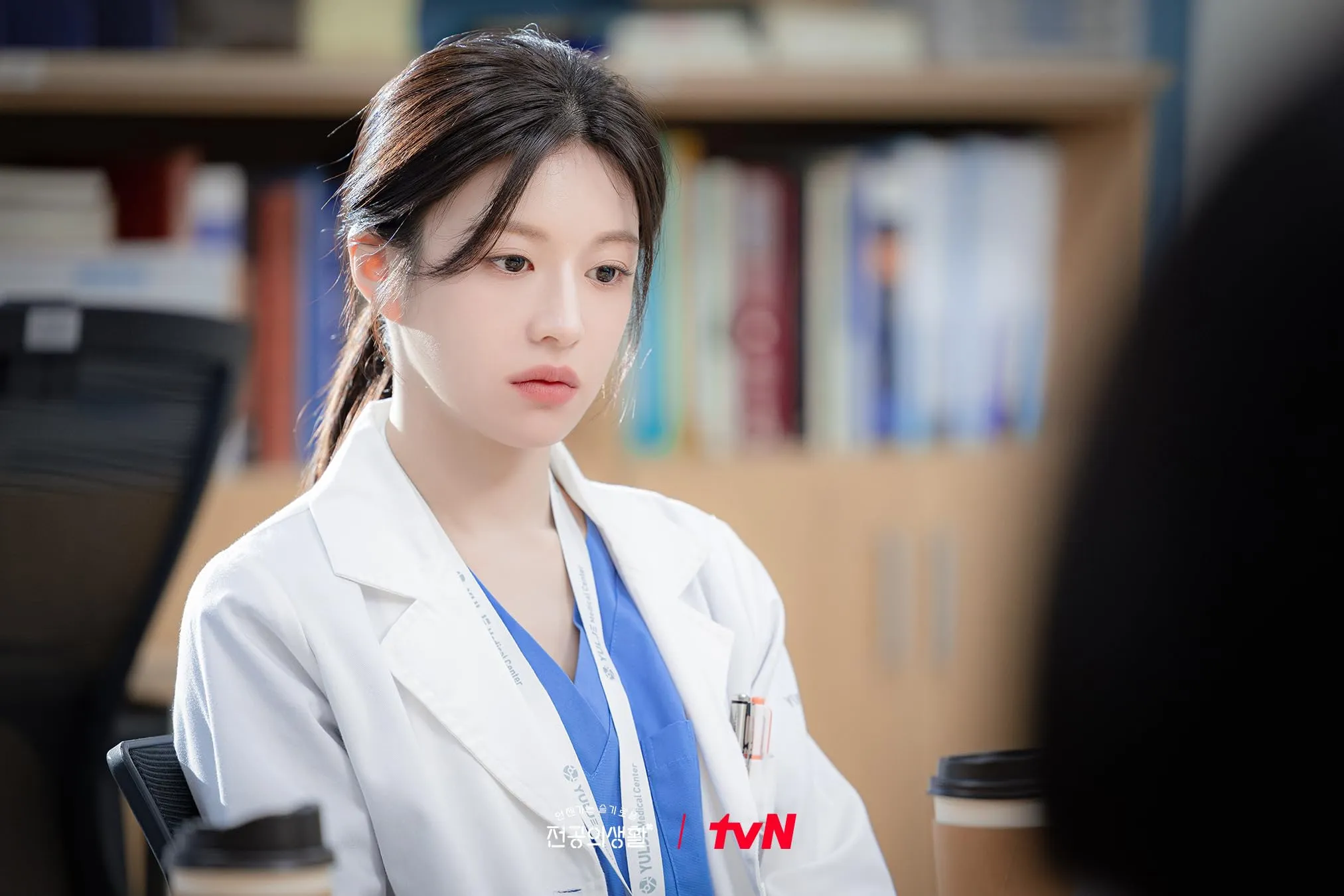Resident Playbook Season 1 introduces a fresh narrative set in the OB/GYN department, a seldom-explored environment in hospital dramas. The series follows four new residents as they face tangled personal predicaments—ranging from financial burdens and past missteps to family complications—against the backdrop of a demanding medical institution.
In this series, the depiction of everyday hospital life is rendered with an earthy realism that echoes current societal debates on equity and institutional rigor in healthcare. The storytelling concentrates on the personal struggles of young professionals as they cope with a fast-paced work environment, lending a human face to issues often discussed in abstract policy terms.
In terms of setting, the series constructs a microcosm that mirrors current shifts in public expectations of medical care. The OB/GYN department setting not only offers an uncommon stage for television but also reflects contemporary discussions about professional fulfillment and personal resilience. The narrative is organized with tight plotting and purposeful pacing, conveying moments of high tension interspersed with dashes of sarcastic humor.
This blend of sharp observations and grounded scenarios creates a window into how media can question or affirm existing cultural practices. Production choices and casting decisions extend this dialogue, subtly influencing viewers’ perspectives on representation and the everyday realities faced by those in medical fields.
Plot and Narrative Structure: Charting the Story’s Course
The series opens with a commanding first episode that introduces viewers to the core group of first-year residents confronting immediate, high-stakes challenges. Yi-young finds herself thrust back into a clinical setting under unexpected circumstances while her peers face their own demanding tasks in an OB/GYN environment that is rarely explored on screen. The initial episode presents a clear picture of both the professional and personal conflicts that will continue to shape the narrative.
From the beginning, the personal histories of the residents drive the unfolding events. Yi-young’s past financial troubles and previous setbacks create a sense of urgency that propels the plot forward. Her internal struggles and the remnants of past failures are interwoven with moments of crisis in the operating room, turning personal setbacks into catalysts for the broader story. Each resident’s experience contributes to an interconnected storyline where individual challenges intersect with the collective pressures of a rigorous hospital setting.
The series skillfully balances moments of intense drama with lighter sequences that provide brief relief from the clinical tension. Instances such as offbeat dreams and playful exchanges among the residents offer brief escapes, punctuating otherwise weighty scenes with unexpected humor. These moments of levity enhance the portrayal of characters who are grappling with real-world hardships, reinforcing the human element behind their professional responsibilities.
The pacing of the narrative is measured, with a deliberate build-up of tension that alternates with intervals of reflective downtime. As subplots involving rivalry, mentorship, and deep-seated personal conflicts emerge, the storyline allows viewers to gradually uncover the motivations behind each resident’s struggles. Details of their backstories are revealed incrementally, inviting careful attention to character development and connecting their individual experiences to larger social and cultural discussions reflected in their day-to-day realities.
Character Analysis and Development: Portraits of Modern Medicine
Oh Yi-young is portrayed with a background marked by personal setbacks and pressing financial concerns that leave her reluctant to engage fully with her profession. Her early detachment gives way to moments where sharp competence and hidden resolve begin to surface, painting a portrait of someone striving to reclaim professional dignity despite harsh early experiences. Her narrative is framed by a history of failed opportunities and the weight of familial expectations, making her a focal point for discussions about self-worth within a demanding industry.
Pyo Nam-kyung presents herself with confidence and a refined sense of style, yet her exterior hints at insecurities that occasionally prompt subtly competitive behavior with Yi-young. Her tension with her peer is not merely personal; it reflects deeper issues of ambition and self-perception in an environment where appearances are meticulously managed. There is a wry irony in her attempts to undermine others as a means of bolstering her own standing, raising questions about the pressures imposed by modern professional roles.
Kim Sa-bi is introduced as a figure defined by academic precision. Her performance in patient care is methodical to the point of mechanical, suggesting an eventual opportunity for a more heartfelt transformation. The rigid routine of her clinical approach contrasts with the emotional spontaneity visible in other characters, hinting that her eventual shift toward empathetic practice could signal a broader reconsideration of healthcare practices in contemporary narratives.
Um Jae-il, transitioning from a life on the stage as a pop icon, brings a layer of levity that softens the institutional rigor of his surroundings. His frequent mistakes and earnest desire to be of service suggest a transformation that is both humanizing and unorthodox, connecting the professional realm with a softer, more personable side.
Secondary characters, such as the stern mentor Dr. Seo Jung-min, known colloquially as “The Witch,” offer a blend of strict supervision and undeniable care. Figures like Ku Do-won lend stability amid turbulent shifts, while interactions among the cast create a network of professional camaraderie, rivalry, and unexpected alliances that continue to evolve with each new challenge.
Setting and Hospital Environment: The Pulse of Modern Medicine
Jongno Yulje Medical Center emerges as a living, breathing backdrop against which the entire series unfolds. The hospital’s corridors brim with the hustle of busy staff and anxious patients, capturing the immediate pressures of the medical profession. Its sterile yet charged ambiance functions as a silent witness to both the daily routines of healthcare providers and the unexpected crises that demand split-second decisions.
The focus on the OB/GYN department spotlights a rarely depicted area, where the clinical realities intersect with profound human experiences. Here, every delivery and emergency mirrors the intense, sometimes chaotic interactions of life and loss, highlighting scenarios that force characters to confront their vulnerabilities as they care for patients in moments of profound need. This setting offers a stage where reproductive health issues carry emotional weight that mirrors real-world struggles, serving as a microcosm for broader societal concerns.
Attention to the visual and sensory aspects heightens the sense of realism. Thoughtfully lit spaces, the rhythmic hum of hospital machinery, and the clamor of voices in tense emergency situations create an immersive atmosphere. These detailed elements contribute to the story’s authenticity, ensuring that viewers remain deeply connected to both the characters and the environment that shapes their everyday battles.
Themes, Tone, and Narrative Style: Shaping Stories in a Shifting Social Climate
The series presents a clear contrast between the demands of the workplace and the private struggles of its characters. The four residents deal with personal setbacks alongside heavy professional loads. Their financial worries, family obligations, and past misfortunes influence every decision they make in a fast-paced hospital setting. This study of work-life interference becomes a mirror reflecting challenges faced by many today.
In examining moments of personal triumph against the odds, the show portrays instances of recovery that spark further character development. For example, Yi-young’s gradual recognition of her hidden strengths in critical situations mirrors real-life circumstances where minor wins lead to broader personal change. These instances subtly raise issues of social justice and equal opportunity in professional spheres.
A commitment to accurate portrayals in healthcare underscores a sensitivity to daily life in a hospital environment. Routine procedures mirror the weight of practical struggles, with clinical details often serving as symbols for larger societal issues. The intricate production design, realistic dialogue, and period-appropriate language allow viewers to feel as though they are witnessing everyday confrontations in healthcare institutions.
The mood vacillates with a measured rhythm: humor surfaces amid tension, balancing moments of quiet irony with scenes of high-pressure drama. The deliberate organization of character interactions and reflective passages creates a sense of immediacy, inviting viewers to question and reconsider traditional narratives. This form of storytelling signals a shift in global television, prompting audiences to reassess the cultural roles assigned within modern media.
Episode Highlights and Key Scenes: Transformative Moments on Screen
The show begins with a striking opening that captures immediate attention. A sweeping view of the Seoul skyline juxtaposed with a dramatic emergency scene creates an arresting visual introduction. In the initial moments, Yi-young’s unexpected return to the hospital is presented amid a charged atmosphere, establishing the essential tension between her reluctance and the urgent demands of the medical world.
Scenes in the first episode reveal Yi-young’s internal conflict clearly. One memorable sequence shows her grappling with financial stress and the weight of past errors in a hospital corridor that buzzes with urgency. Her quiet moments of vulnerability contrast sharply with high-intensity situations such as emergency surgeries and rapid decision-making in the operating room.
At times, light-hearted sequences inject relief into an otherwise serious tone. Instances like offbeat dream sequences bring humor into the mix, providing relief amid the drama, while equally important are scenes that capture unexpected surgical missteps. These instances demonstrate how the residents improvise solutions during unforeseen crises, setting a tone that balances medical precision with human error.
Interactions between characters add a rich layer to the narrative. A notable scene between Yi-young and Dr. Seo Jung-min underscores a complex mentor–mentee dynamic filled with both tension and a reluctant acknowledgment of capability. Additionally, exchanges among the residents reflect moments of both rivalry and camaraderie, sparking a chain reaction that marks pivotal turning points early in the series.
Production and Technical Aspects: Crafting a Realistic Medical World
The director employs a storytelling approach that balances measured pacing with moments of high kinetic energy in the hospital setting. The narrative unfolds through deliberate scene transitions and carefully selected camera angles that capture both the sterile ambiance of the corridors and the charged emotions of pivotal medical moments. Close-up shots emphasize the unsaid distress and determination on the residents’ faces during critical procedures, deepening the connection between the viewer and the unfolding drama.
Signature scenes reveal a refined command over tension and release. A series of shots capture the strain in the operating room when a procedure teeters on the brink of catastrophe, leaving space for reflections conveyed in brief, silent intervals. The director’s stylistic choices set this show apart from other medical dramas, presenting a world where the clinical routine is interlaced with spontaneous, human reactions that speak to everyday challenges.
The performances of the primary cast merit special attention. Go Youn-jung, Shin Si-ah, Kang You-seok, and Han Ye-ji deliver portrayals that traverse a spectrum of emotion, translating internal struggles into subtle gestures and fleeting expressions. Their interactions with supporting figures, including the uncompromising mentor and dependable anchors of support, add significant layers to the narrative. The supporting actors lend conviction to their roles, enhancing the dramatic and personal stakes without descending into caricature.
The script strikes a balance between specialized terminology and relatable dialogue, drawing viewers into conversations that mirror authentic hospital exchanges. Moments of humor emerge naturally, often arising from the tension of a near-miss during a surgical procedure or an unexpected quip among colleagues that lightens an otherwise charged atmosphere.
Sound design and music contribute depth as well. The score punctuates intense sequences with understated musical cues, while ambient sounds—beeps of monitoring equipment and the murmur of busy hallways—root the series in its realistic environment. Set design, wardrobe, and lighting collaborate to form a visually convincing hospital that reflects the physical and emotional landscapes navigated by its characters.
The Review
Resident Playbook Season 1
Resident Playbook Season 1 provides a refreshing take on the medical drama genre, presenting a realistic portrayal of professional trials intertwined with personal challenges. The series captures the essence of modern healthcare with precise storytelling, thoughtful performances, and visual authenticity that resonates with contemporary social discussions. Technical finesse and a measured tone offer a clear window into the emotional terrain of first-year residents, striking a careful balance between tension and levity.
PROS
- Authentic portrayal of hospital life
- Engaging performances from the lead cast
- Unique focus on the OB/GYN department
- Nuanced exploration of personal and professional challenges
- Effective balance between dramatic tension and humor
CONS
- Occasional slow pacing in narrative build-up
- Some predictable plot elements
- Underexplored subplots in certain episodes
- A few characters receive limited development









































